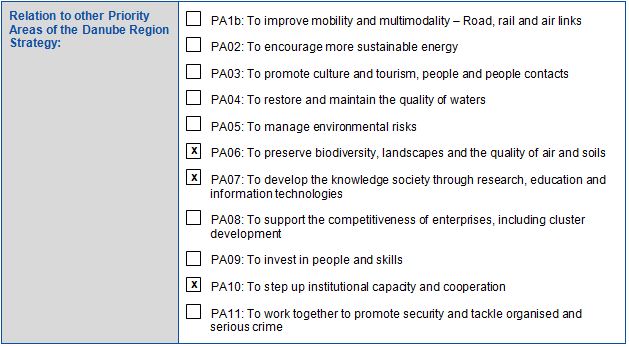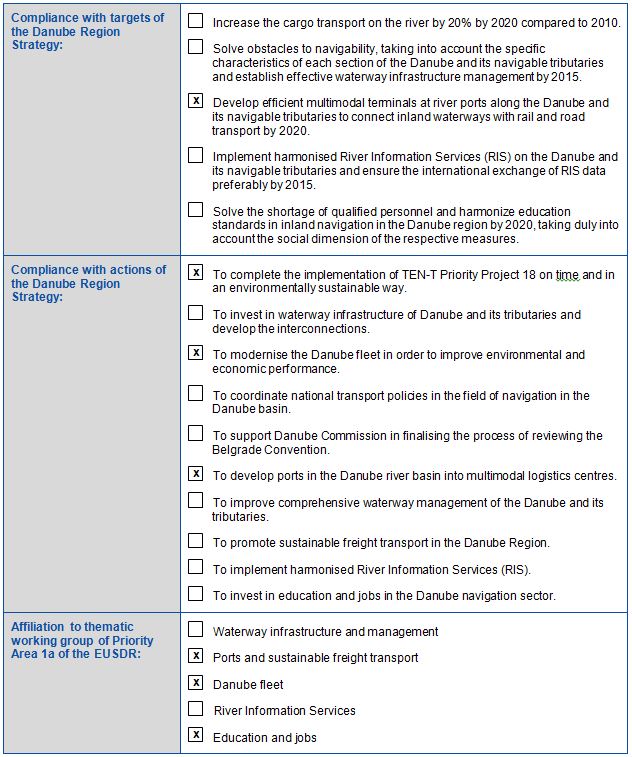BASIC PROJECT DATA – PROJECT IDEA
Project ID: PA1A083
NEED AND ADDED VALUE FOR THE DANUBE REGION STRATEGY
The Danube corridor represents important infrastructure for transport and for commercial activities. Development of inland waterway transport and ports’ activities lead to a disturbance of the environment by affecting biodiversity, quality of air, soil and water. As far as IWT is concerned, introduction of innovative technological solutions for pollutant emission reduction on board is a major task.
According to the EU Strategy for the Danube Region’s Action Plan, “better transport and energy infrastructures are the condition for innovation (attracting skilled researchers and workers). Innovative solutions can reduce costs, improve efficiency and encourage sustainable solutions”. The consortium was committed to develop innovative, safe and sustainable IWT concepts, focussing on a significant reduction of emissions and optimal efficiency for IWT fleet and logistic chain.
This project idea was about addressing the urgent need to reduce levels of pollutant emissions caused by inland waterway transport (IWT), both on board of vessels and in river ports. If implemented, the project would thus have secured significant progress towards reducing the levels of harmful emissions along the Danube corridor by considering the whole system of river transport, from the ship’s exhaust stack all the way through to river port logistics.
It was envisaged that the design of new port infrastructure and the modernization of existing ports based on the idea of a “green port” would be taken into consideration in the concepts resulting from this project.
If implemented, this project would also have improved sustainability of IWT ships by promoting the transfer of knowledge regarding green logistics through the informational training centres (ITCs) developed in previous projects such as PLATINA and NELI and e-communication integration with RIS as an optimization of co-modal transport.
The deliverables of this project would have aided the elaboration of regulations for river ports and inland waterways ships regarding environmental issues.
OBJECTIVE(S) OF THE PROJECT
The objectives of the project idea are:
- This holistic programme of research would have developed the “eco-friendly ship” concept. The first strand to this investigation would have been to establish the relationship between the type, duty cycle and age of the engines that power ships navigating the Danube corridor and their emissions characteristics.
- In order to establish the impact of this new technology, the project would have analysed the effect of pollutant emissions on ecosystems from different populated, protected and low dissipation geographic areas along the Danube corridor. In order to understand the effect of ships within these regions, a series of parametric mathematical models would have been developed for pollutant emission levels for certain engine types and operating regimes.
- The concept of a “green port” would have been developed using data relating to the levels of pollutant emissions and pollutant maps. Within the port, it would have been necessary to establish the constraints in cargo handling and ship manoeuvring.
PLANNED PROJECT ACTIVITIES
Contribution to development of new low emissions integrated systems for innovative IWT ships is foreseen by the project idea by:
- Evaluation of the emissions of IWT ships’ engines
- Finding solutions to reduce the emissions
The next step would have been the elaboration and implementation of regulations for pollution monitoring similar to maritime transport.
- Investigating the influence of the pollutant emissions from IWT ships on ecosystems from different populated, protected and low dissipation geographic areas along the Danube corridor and elaboration of pollution maps in port areas
- Contributing to the improvement of logistics management in ports by:
- Decreasing the operating times
- Implementing the e-communication inside the logistic chain
- Concept of green logistic chain integration
TRANSBOUNDARY IMPACT
Inland waterway transport in general and the Danube Corridor in particular.
PROJECT BENEFICIARIES / TARGET GROUPS
Members of the consortium and stakeholders, inhabitants of the Danube region
STATUS AND TIMEFRAME
The project was not realised.
It was intended to be conducted for a three year period from 2013 to 2016. The proposal for the project was submitted to the FP 7 Programme, but was rejected even though it had received a letter of support from the EUSDR.
Some of the project’s ideas, concepts and challenges have already been tackled in other projects which are currently ongoing.
FINANCING
Total budget: 3,268,374 EUR (indicative)
The project was not approved for funding (FP7).
PROJECT TEAM
Project leader: University of Craiova – UCV / Romania (website: www.ucv.ro)
Address: A.I. Cuza Street No. 13, Craiova, 200585, Dolj / Romania
Project partner(s):
- STC Group / The Netherlands
- University of Lincoln / United Kingdom
- University of Sussex / United Kingdom
- Brodarski Institute / Croatia
- University of Montenegro / Montenegro
- Romanian Maritime Training Centre / Romania
- Institute for Shipping Economic and Logistics / Germany
- University of Zilina / Slovak Republic
- Centre of Maritime Technologies e.V. / Germany
- Research and Development Centre in Transport & Energy / Spain
- University of Applied Sciences / Germany
- University of Technology and Economics / Hungary
- Faculty of Mechanical Engineering, University of Ruse “Angel Kanchev” / Bulgaria
- Clean Water Project Company / Bulgaria
- IPA CIFATT / Romania
- WDL Powertrain Systems Engineering Ltd / United Kingdom
PROJECT ENVIRONMENT
PROJECT CROSS – REFERENCE
PLATINA (PA1A004), NELI (PA1A009), INNOSUTRA, CREATING
EUSDR EMBEDDING
EUSDR COMPLIANCE
META DATA
Data provided by: Gabriel Benga (University of Craiova, Romania) – 27.02.2012
Last update by: Gabriel Benga (University of Craiova, Romania) – 11.10.2017
Download pdf.



